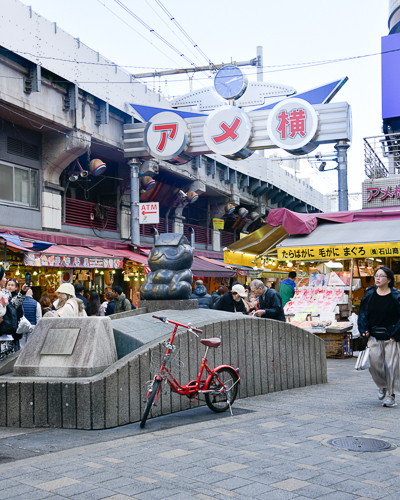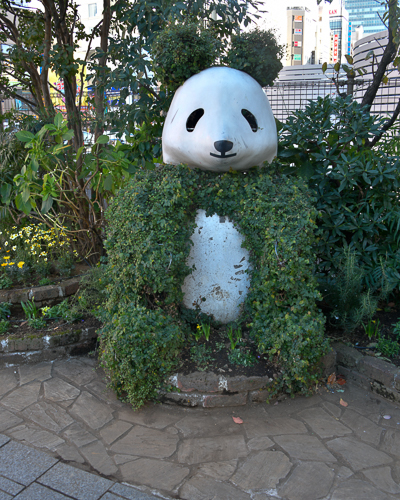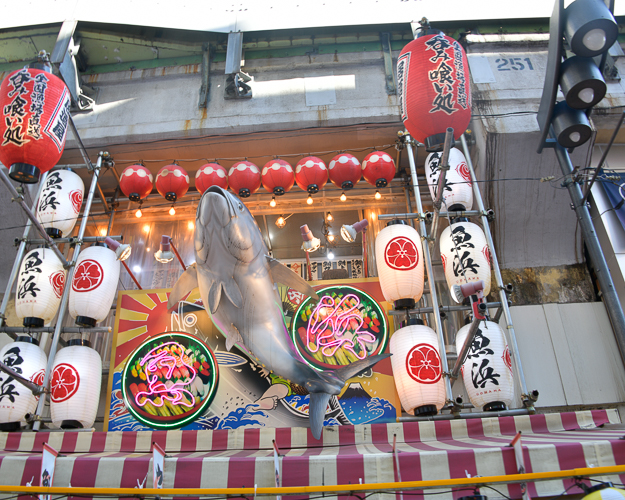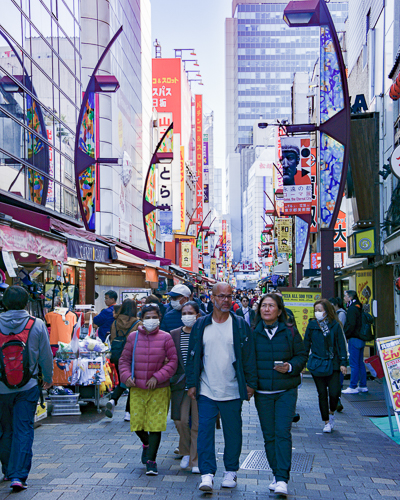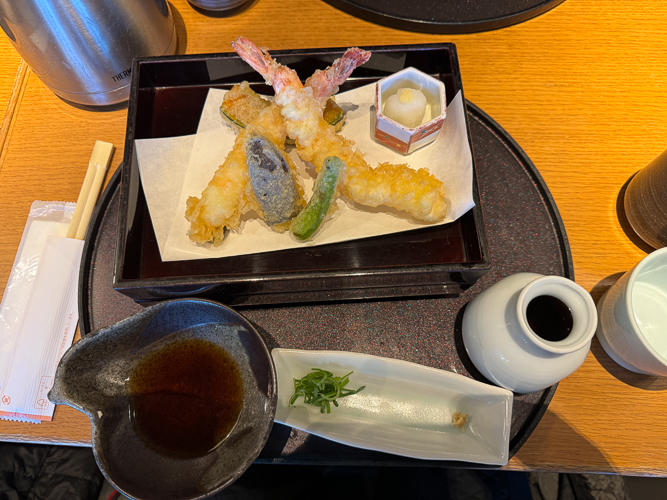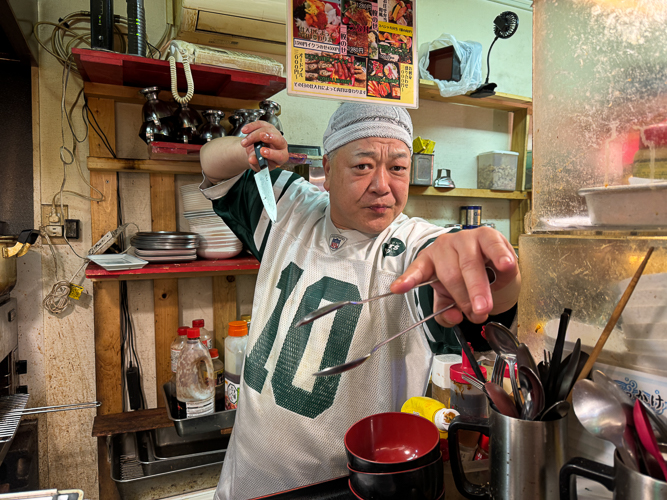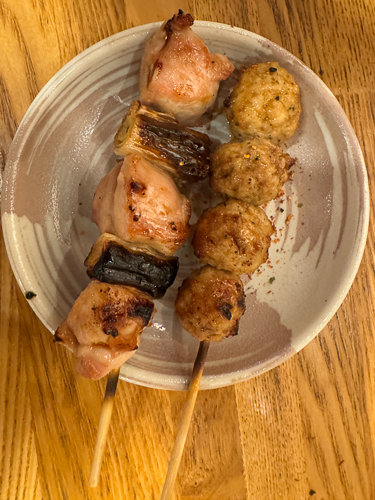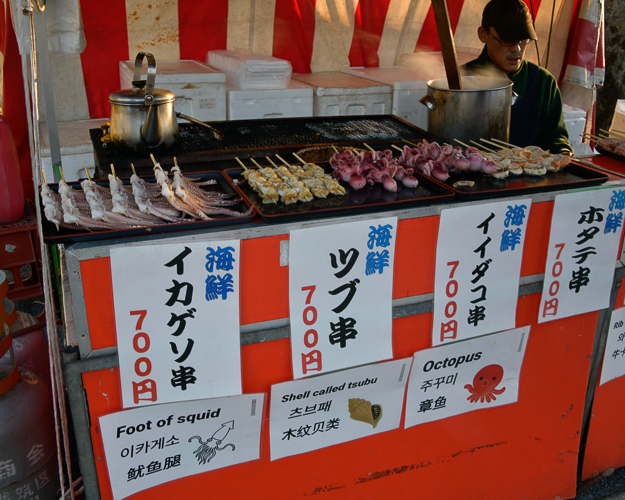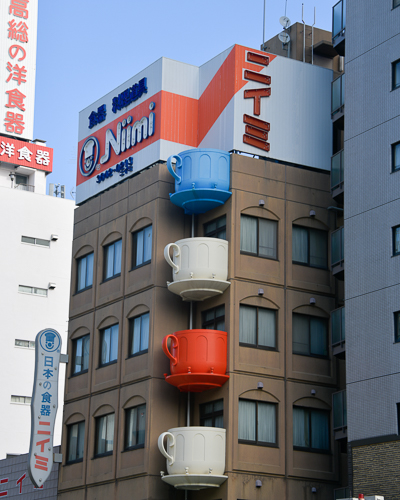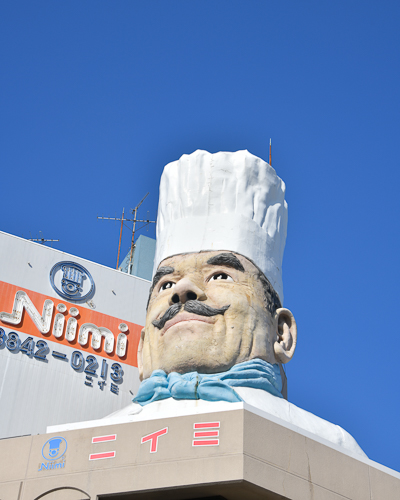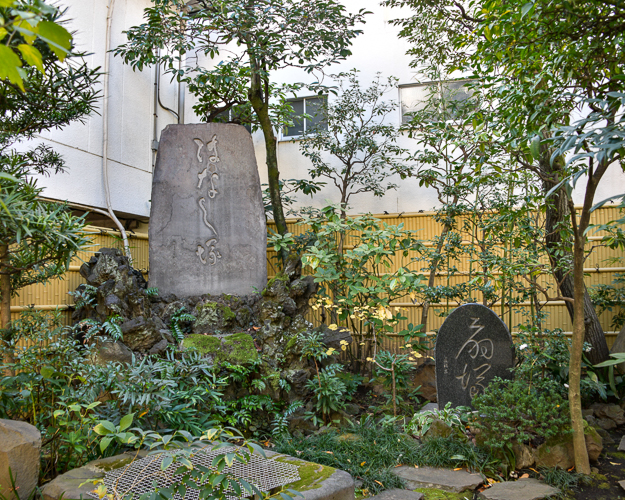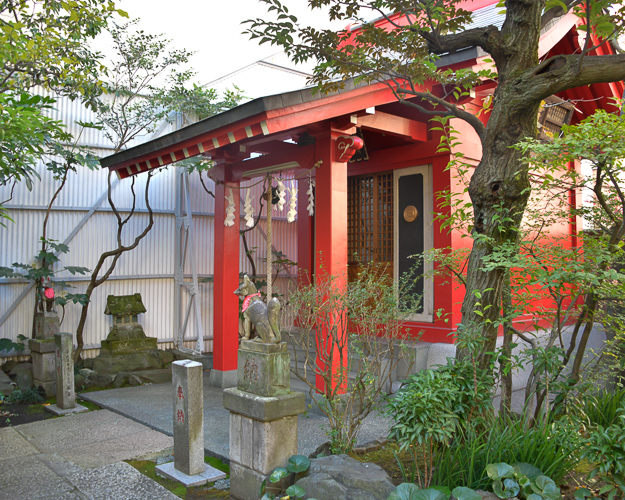November 2023
For my first week in Tokyo, I am staying in the Ueno district in Taito Ward. The biggest attraction is Ueno Park. Ueno is a working-class area that is beginning to become popular and is adjusting to a tourist clientele.
There are two central portions of Ueno, the Park, and the Ameyoko area.
The origins of Ameyoko started in post-war black-market commerce, where stalls would sell a range of products from sweets and snacks to used American military wear. An edgy aspect still remains to this commercial area.
Ueno Park is the home to Japan’s largest zoo and the original home of the first pandas brought to Japan from China. Therefore, Pandamonium is what you get throughout Ueno.
*
Ameyoko is also known for its street food and bar food.
Street food in Ueno
The Asakusa and Ueno neighborhoods mesh together, so walking the streets, you find many odd and curious things. These cups and chef are part of the cookware area of Asakusa.
This giant chef was installed in March 1982 when Niimi renovated its building. He is 36 feet tall. This unforgettable guy has since spawned numerous urban legends, and according to the most popular rumor, it is actually a giant robot in disguise, the rest of its body hidden in the building, and will be activated when Tokyo faces a Godzilla-class danger.
Wandering Japan can throw you for a loop, as the juxtaposition between an important graveyard or temple and the local body shop means that if you make assumptions, you can miss a lot of things.
At the onset of World War II, the Japanese Imperial government created the censorship committee. They banned any works of art that disrespected the emperor, criticized the military, or were “against public policy.”
Rakugo, the Japanese art of comic storytelling, was not spared, as some tales dealt with sexuality and alcohol. In 1941, Rakugo performers gathered at Honpō-ji Temple to hold a funeral for the censored stories. They ceremoniously buried the scripts of 53 tales. After the war, in September of 1946, The Revival Festival of Abolished Plays was held in front of the Mound. Today, scripts of comic stories played in wartime are stored in the mound.
This is a very quick look at the streets of Ueno. The massive Ueno Park will be next.
